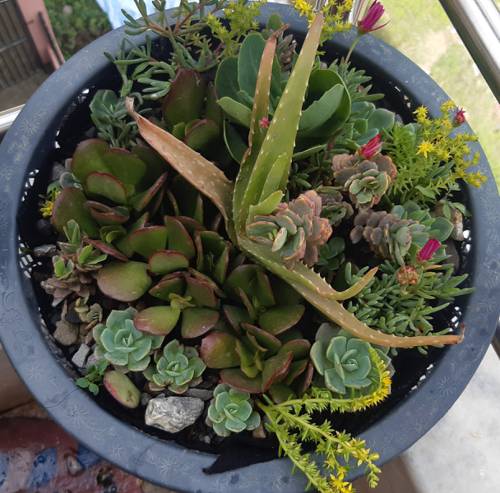
FAQ About Indoor Plant Sound Wave Growth Influence

What are sound waves and how do they affect indoor plants?
Sound waves are vibrations that travel through the air or another medium. They can influence the growth and health of indoor plants by causing physical vibrations within the plant tissues, which may enhance nutrient uptake and stimulate growth. Research suggests that certain frequencies can affect the opening of stomata, thereby increasing photosynthesis and growth rates.

Is there scientific evidence supporting sound wave influence on plant growth?
Yes, there is scientific evidence suggesting that sound waves can affect plant growth. Studies have shown that exposure to sound frequencies between 200 and 300Hz can positively impact plant height, leaf size, and overall health. However, the exact mechanisms are still being studied, and more research is needed to fully understand the effects.

What types of sounds are believed to positively influence plant growth?
Sounds with frequencies between 200 and 300Hz are believed to positively influence plant growth. These include classical music, gentle guitar sounds, and other rhythmic patterns that do not cause stress to the plants. Harsh or loud sounds may have the opposite effect, potentially inhibiting growth.

How does classical music affect indoor plant growth?
Classical music, particularly compositions with harmonic, rhythmic patterns, is thought to create sound frequencies conducive to plant growth. Studies have suggested that classical music can enhance nutrient absorption and stimulate growth by producing frequencies that cause beneficial vibrations in plant cells.

Can sound waves replace traditional methods of plant care?
Sound waves should not replace traditional plant care methods such as watering, exposure to sunlight, and proper nutrient provision. They can, however, be used as a complementary method to potentially enhance growth and health when used alongside conventional plant care techniques.

Do different plants respond differently to sound waves?
Yes, different plant species may respond differently to sound waves. Some plants might show increased growth and vitality when exposed to certain sound frequencies, while others may not exhibit as noticeable a response. The variability can depend on the plant's genetic makeup and natural habitat conditions.

Are there negative effects of sound waves on indoor plants?
Negative effects can occur if the plants are exposed to extremely loud or harsh sounds, which can create stress and potentially damage plant tissues. Sounds like heavy metal music or intense urban noise might adversely affect plant growth by causing negative vibrations or increasing stress hormone levels.

How often should sound waves be used to benefit plant growth?
The frequency and duration of sound exposure can vary based on the desired effects and specific plant needs. Typically, a few hours per day at moderate volumes can be sufficient to observe positive outcomes. It's essential to monitor the plants for any signs of stress or improvement and adjust accordingly.

What are some common misconceptions about sound waves and plant growth?
A common misconception is that any sound or music will automatically benefit plant growth. In reality, only certain sound frequencies (typically between 200-300Hz) are beneficial, and not all plants respond favorably. Another misconception is that sound can replace essential care elements like light, water, and nutrients.

Can household objects create useful sound waves for plants?
Household objects that produce sound, like radios or speakers playing music or specific frequencies, can be used to create an environment conducive to plant growth. Care should be taken to ensure the sound is suitable in frequency and volume so as not to disturb the plants.

How do researchers test the effects of sound waves on plants?
Researchers conduct controlled experiments where plants are exposed to specific sound frequencies over a set period while maintaining standard growing conditions. They measure growth variables such as plant height, leaf size, and health indicators to assess the effects of the sound treatment compared to a control group sans sound exposure.

What frequencies are harmful to indoor plant growth?
Frequencies that are very high or low outside the range of beneficial sound waves can be harmful. Extremely loud noises or aggressive sound patterns may trigger stress responses in plants, potentially inhibiting growth or causing physiological damage.

Is it better to use natural sounds or music for plant growth?
Both natural sounds, like bird songs or rain, and music composed with beneficial frequencies can promote plant growth. What's important is the frequency and pattern of the sound, as repetitive and harmonious sounds generally yield better results than chaotic or dissonant ones.

Does the volume of sound affect plant growth?
Yes, the volume of sound plays a critical role in affecting plant growth. Sounds at a moderate volume are believed to be beneficial, whereas high-volume sound waves can cause stress and damage plant tissues. It's advisable to keep the sound at a level that's soothing and not overwhelming for the plants.

Can ultrasonic frequencies benefit indoor plants?
Ultrasonic frequencies, typically above the range audible to humans, are not well-documented in terms of benefiting plant growth. Most studies focus on audible sound ranges, and further research would be needed to confirm any positive effects of ultrasonic waves on plants.

How do sound waves facilitate nutrient uptake in plants?
Sound waves may facilitate nutrient uptake by causing microscopic vibrations within plant cells and tissues, promoting more efficient movement and absorption of nutrients through enhanced membrane permeability. This hypothesis remains under investigation, with ongoing research to elucidate the precise mechanisms involved.

Are there any devices specifically designed to emit sound waves for plants?
Yes, some devices are designed to emit sound waves at specific frequencies beneficial to plant growth. These are often used in agricultural or interior plant settings to enhance growth conditions by replicating the beneficial effects found in research studies.

Does talking to plants help them grow, based on sound wave theories?
While the specific impact of human voice frequencies (such as those used when talking to plants) on plant growth hasn't been definitively proven, gentle and rhythmic sounds, including speaking at a consistent tone, might have a calming or positive effect on plants similar to that of certain music.

Is there a difference in sound wave influence on indoor vs. outdoor plants?
Indoor plants might experience more significant influences from controlled sound exposure due to the stable environment and lack of external noise interference. Outdoor plants are subject to a wide array of natural sounds and may have adapted differently, potentially mitigating the influence of additional sound waves.

How can you tell if a plant is responding well to sound waves?
Signs that a plant is responding well to sound waves include increased growth rate, larger leaves, enhanced flowering, and noticeable vigor. On the contrary, signs of stress like wilting or discoloration may indicate that the sound parameters are not optimal for the plant, requiring adjustments.
